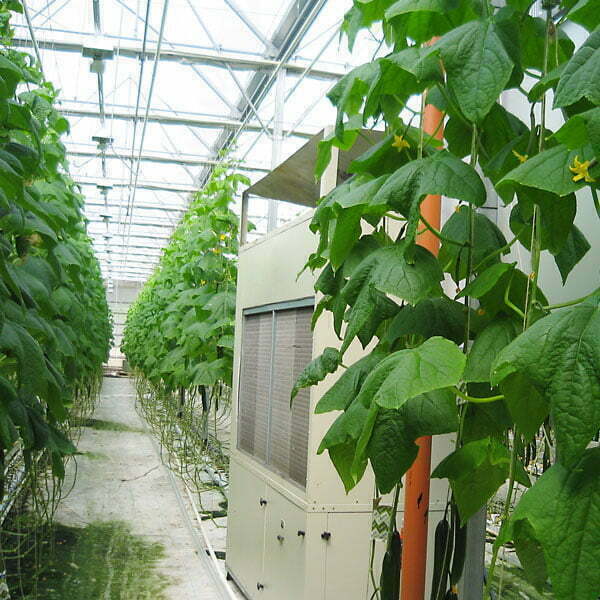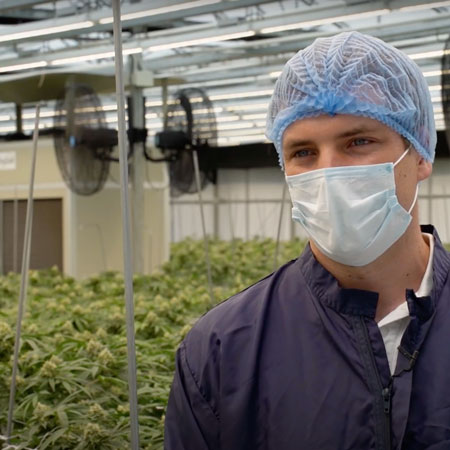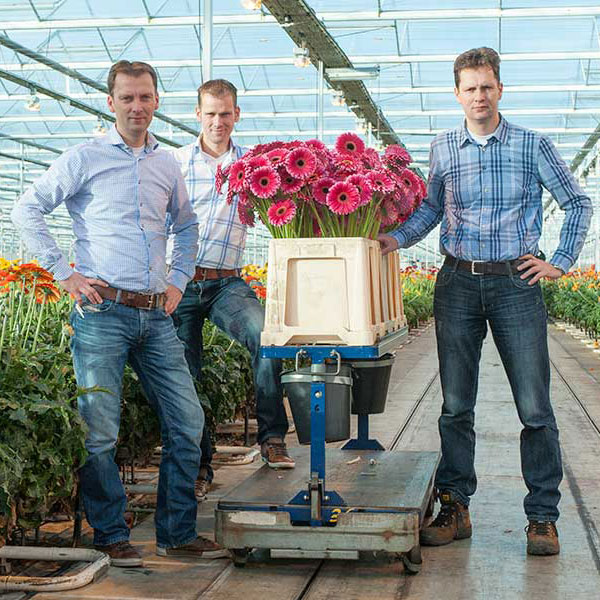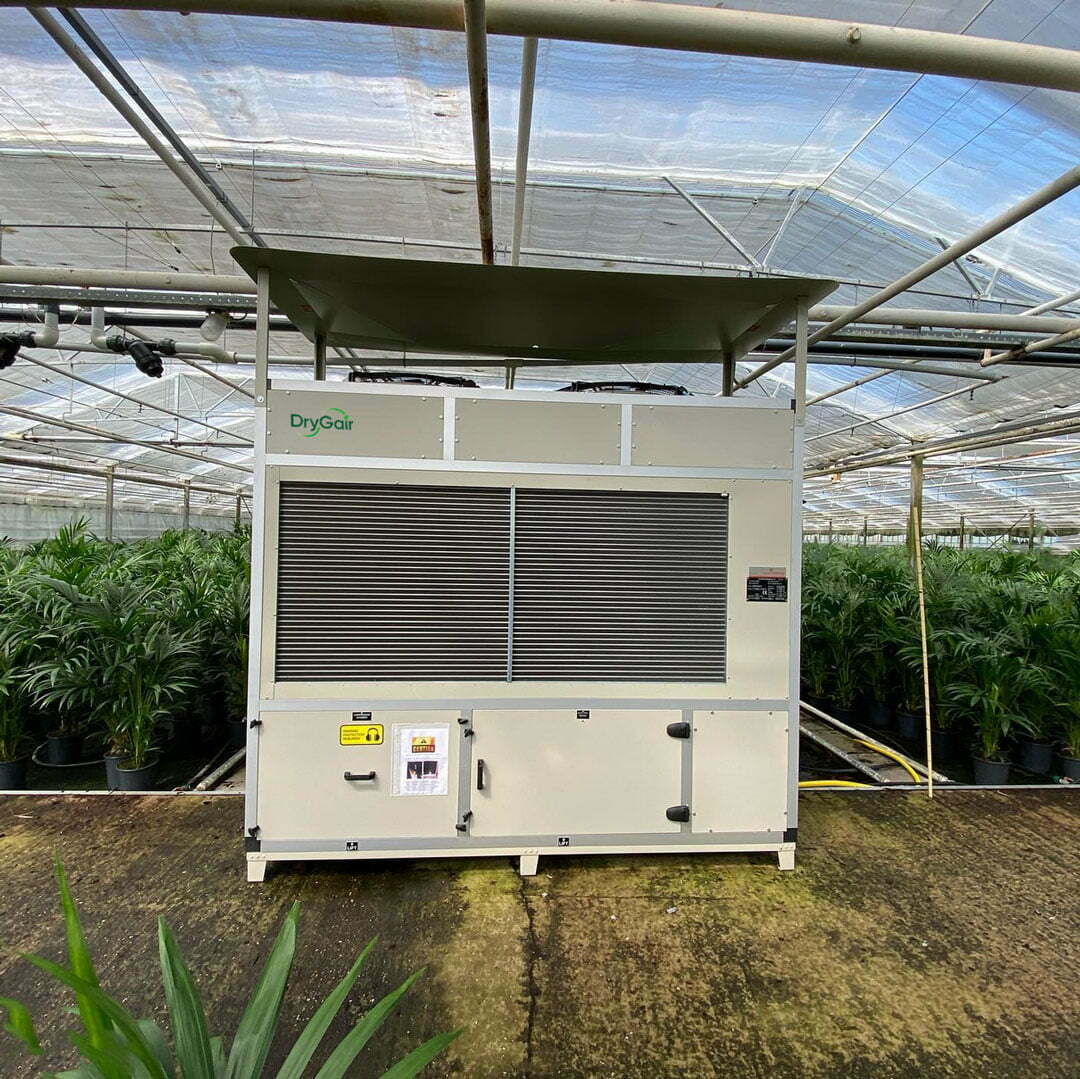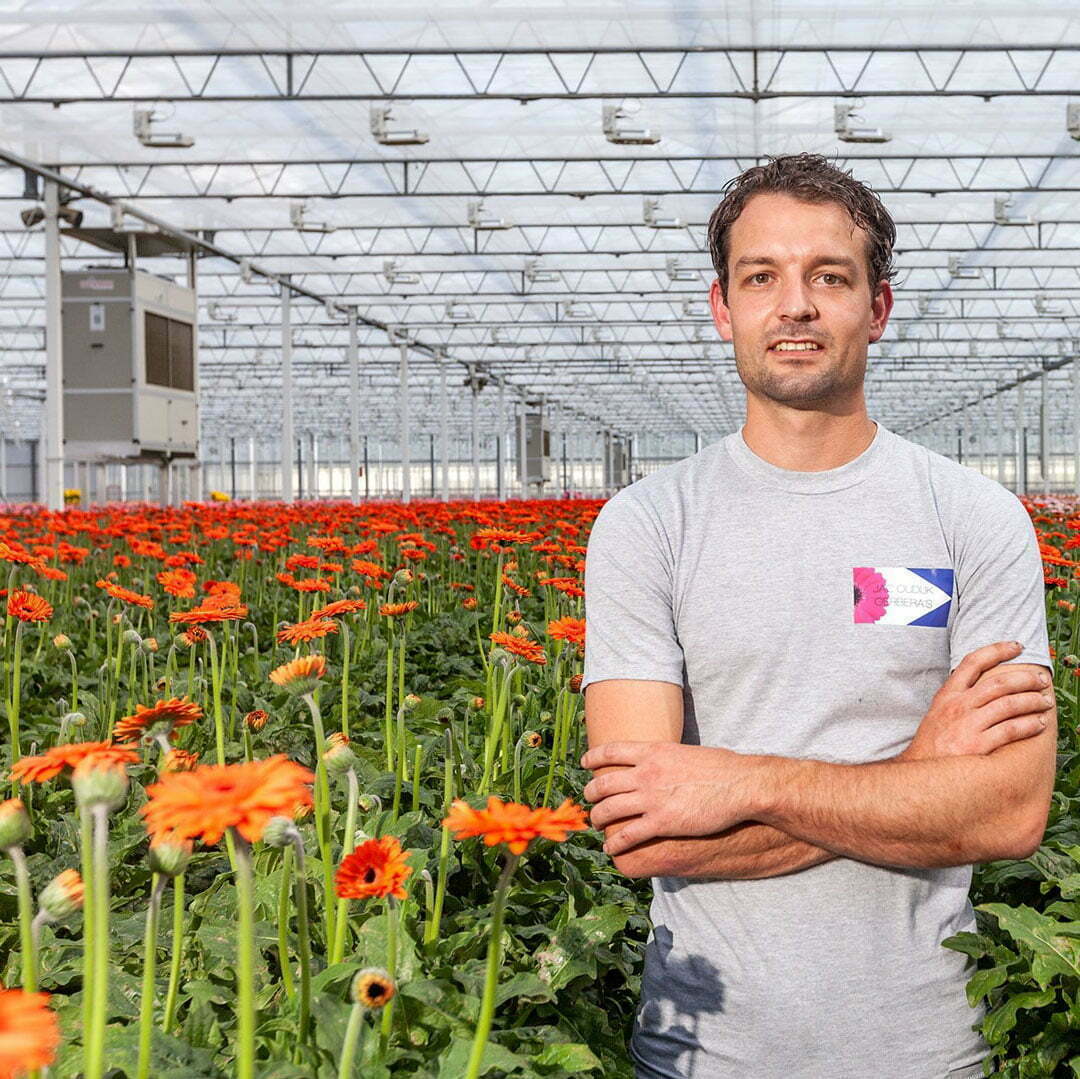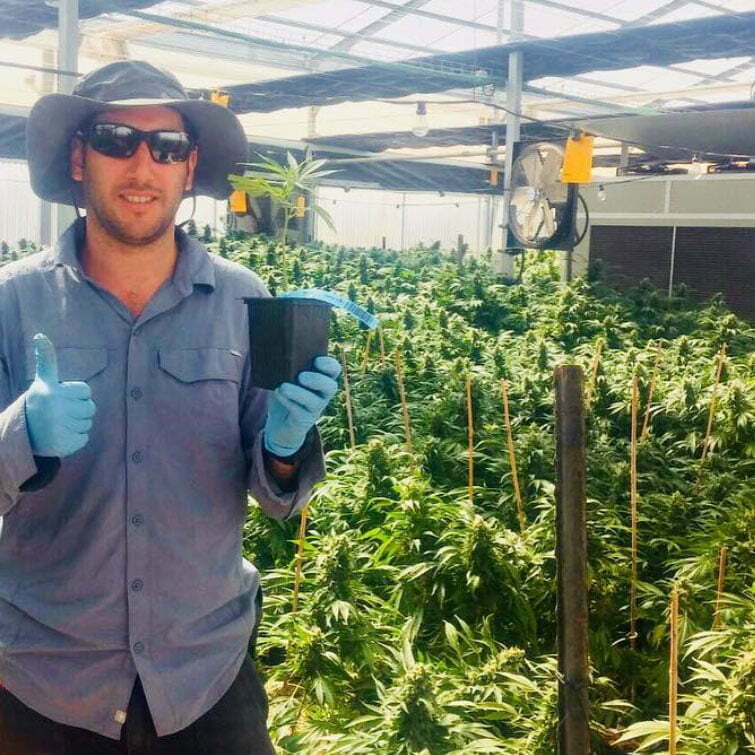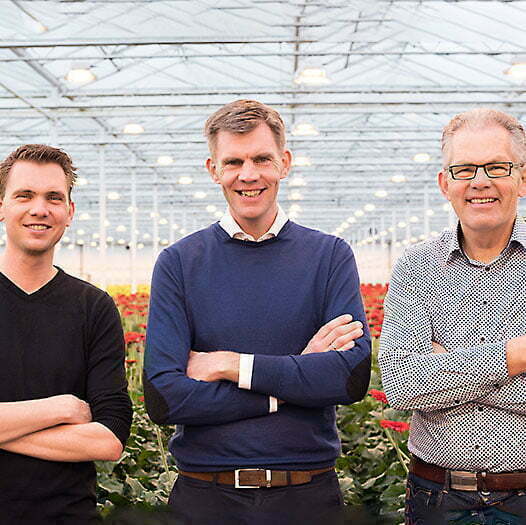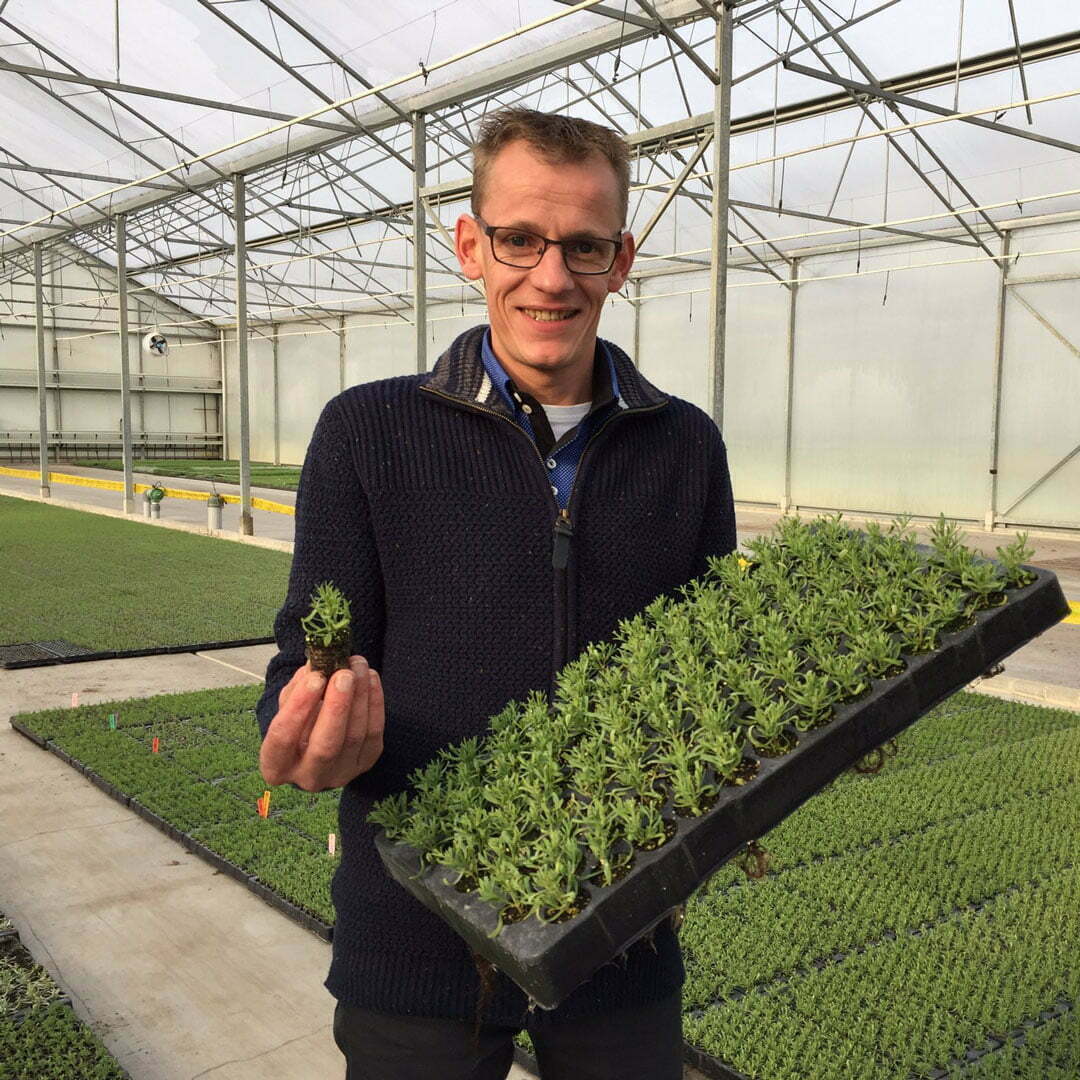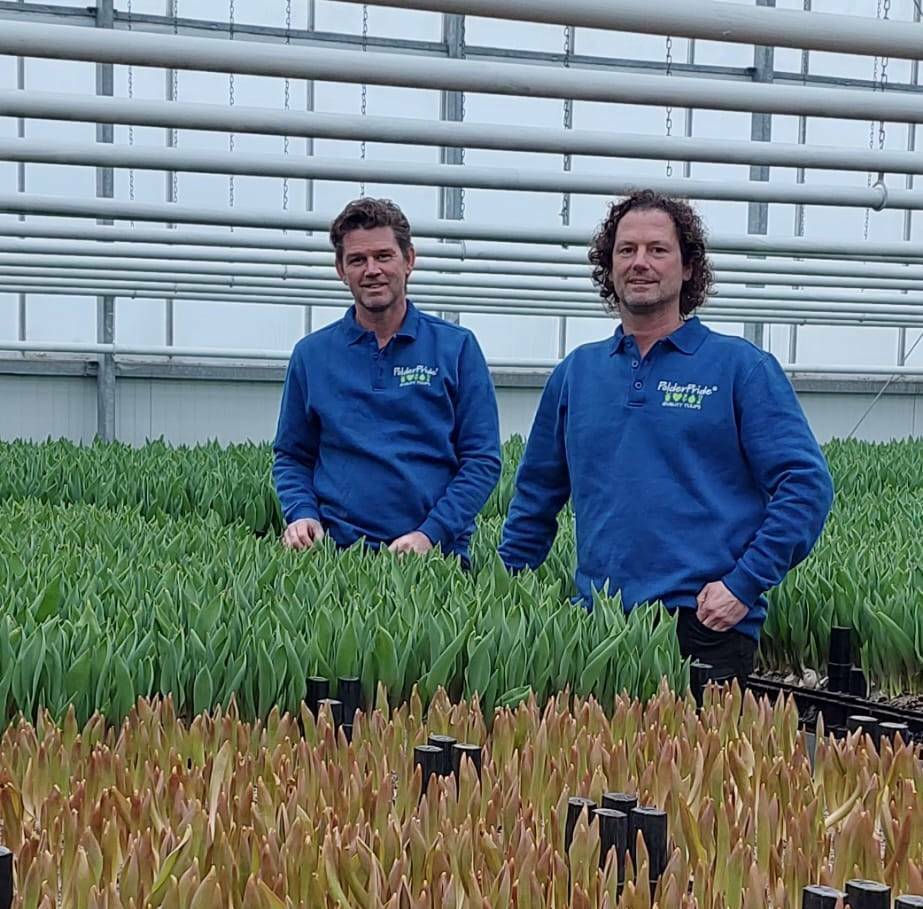DryGair’s dehumidification systems are designed to create optimal air circulation in commercial greenhouses and grow rooms.
One DG unit can cover as much as 4,000 m² (40,000 ft²) and treat up to 22,000 m³ (13,000 CFM) of air per hour. Multiple DG units may be used for larger spaces.
This is achieved through several patented design characteristics:
These two features combined ensure air flow from top to bottom, in an inward motion towards the unit in the center of the greenhouse.
DryGair units take in humid air from the bottom and release warmer dry air from the top. The dry air slowly descends as it cools, providing humidity-controlled air at all height levels while focusing mainly on the top level of the plant, where growth occurs.
DryGair units include a specially designed roof, honed to distribute the outgoing air evenly in all directions. This feature, combined with built-in fans, allows the dry air to travel along thermal screen, to reach all corners of the greenhouse.
How Air Circulation Affects Climate Control
Air circulation is used to enhance climate control systems, obtaining an even climate and promoting active plants. With the use of proper air circulation, growers can effectively achieve homogeneous climate parameters. Maintaining uniform humidity, temperature and optimal VPD. Reducing condensation, improving plant transpiration and maintaining even growth, while increasing energy efficiency.
Benefits of DryGair’s air circulation:
Air circulation may be activated with dehumidification turned on or off, allowing for optimal circulation even when dehumidification is not necessary.
Air Circulation Measurement
To efficiently measure the effect of air circulation, it is best to use a proxy, such as temperature, as air movement itself is difficult to measure accurately.
In a growing space, multiple micro climates exist simultaneously, with differing conditions, making it impractical to measure using only one sensor. To properly measure the homogeneity, and therefore the effectivity of the circulation, it is recommended to use multiple heat sensors or a thermal camera to create a heat map of the facility.
Thermal images show temperature differences due to, in part, proper air circulation.
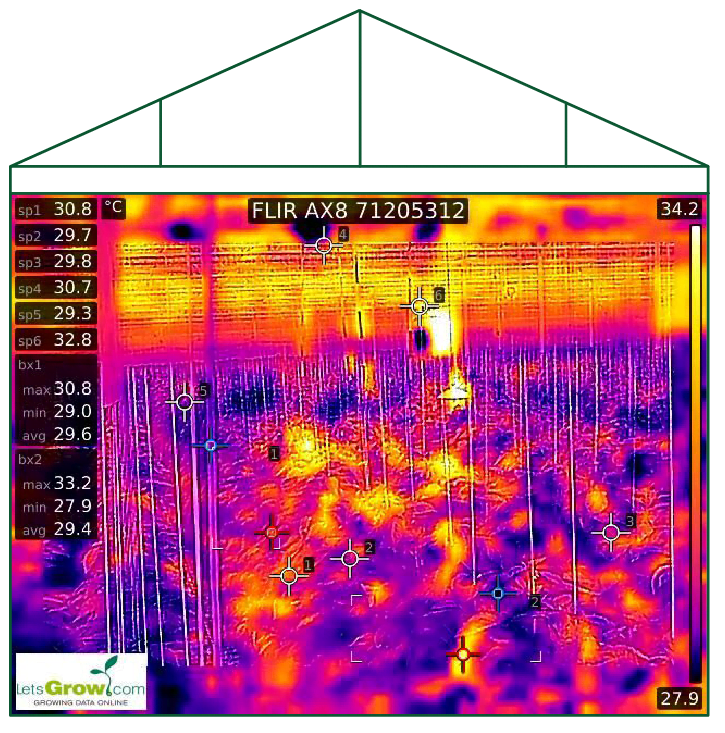
Heat map of a control greenhouse, without DryGair. Temperatures are uneven, with large fluctuations.

Heat map of a greenhouse using DryGair. Conditions are homogenous throughout the greenhouse, with almost no temperature fluctuation.


